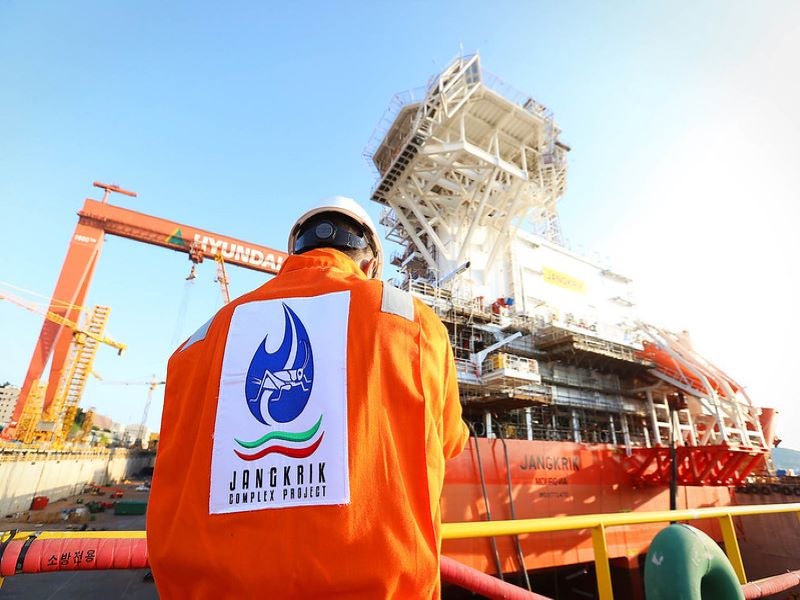The Merakes deep-water gas field located in the East Sepinggan block, Indonesia started production in April 2021.
Eni is the operator and holds a 65% interest in the East Sepinggan block through its subsidiary Eni East Sepinggan, while the other partners are Neptune Energy East Sepinggan BV (20%), and PT Pertamina Hulu Energi (15%).
The Merakes gas development project utilises the existing infrastructure resulting in lesser investment as well as the lesser time taken for the project completion.
The production sharing contract (PSC) scheme for the East Sepinggan block was changed into Gross Split PSC in December 2018. The revised field development plan for the Merakes field under the Gross Split PSC was also approved by the Minister of Energy, Indonesia in December 2018, while the project’s investment plan was sanctioned by Eni in the same month.
Neptune picked up a 20% interest in the East Sepinggan PSC from Eni in December 2019.
The initial gas production from the first five wells in the field is expected to be approximately 450 million cubic feet (mcf) a day.
Location and discovery details
The Merakes field is located in approximately 1,500m-deep waters in the East Sepinggan block in the Makassar Strait, off-the-coast of East Kalimantan, Indonesia.
Situated in the Kutei Basin, the Merakes field was discovered by the Merakes-1 well in 2014, while the first appraisal well Merakes-2 was successfully drilled and tested in January 2017.
The Merakes-2 well encountered 17m of clean sands with petrophysical characteristics of Pliocene age. The deepwater gas field is estimated to contain approximately 2 trillion cubic feet (Tcf) of lean gas.
Separately, Eni discovered the Merakes East prospect, approximately 3km east of the Merakes field, in December 2018. The well encountered 15m of gas-bearing net sands of the Miocene Age, and the East Sepinggan block partners are also evaluating the development options for the Merakes East.
Field development details
The initial field development involves five deep-water subsea wells and the associated subsea production system.
The wells are tied back to the Eni-operated Jangkrik floating production unit (FPU), located approximately 45km northeast of the Merakes field.
The well stream is gathered at the subsea manifold of Merakes field and transported through subsea pipelines to the Jangkrik FPU, which has a maximum production capacity of 750 million cubic feet (mcf) a day. The Jangkrik FPU has been modified to handle the new production from the Merakes field.
The processed gas from the FPU is pumped through the existing Jangkrik export pipelines to an onshore receiving facility (ORF) in Senipah. The gas from the ORF is further sent to the Bontang LNG facility utilising the East Kalimantan transportation network.
The production from the Merakes field is intended to extend the operational life of the Bontang LNG plant.
Bontang LNG Plant
The Bontang LNG plant, operated by PT Badak Natural Gas Liquefaction, consists of eight liquefaction trains (Trains A-H) of a total LNG production capacity of 22.3 million tonnes per annum (Mtpa). The LNG plant commenced operations with the commissioning of the first two liquefaction trains in 1977.
The plant also houses six LNG storage tanks with a total capacity of 630,000m3.
Contracts awarded
TechnipFMC bagged a large integrated engineering, procurement, construction, transportation, and installation (iEPCI™) contract worth up to £756.6m ($1bn) for the development of Merakes field in March 2019.
The scope of the contract included five deepwater wells, as well as the 50km-long tie-back of wells to the existing Jangkrik FPU.
The subsea equipment supplied for the project included subsea trees, a manifold, large-bore high-pressure flexible lines, umbilicals and distribution hardware, flexible risers, flowlines, and jumpers.
TechnipFMC contracted Frames, a company based in the Netherlands for the supply of hydraulic control systems for subsea wells and subsea isolation valves for the Merakes field development in May 2019.
The scope of the contract included a production HPU (PHPU), a topside umbilical termination unit (TUTU), and a subsea isolation valve control (SSIV) panel.
Saipem was contracted for the engineering, procurement, fabrication, and installation of modules on the Jangkrik FPU for handling the Merakes field production. Saipem 3000 vessel was deployed for the installation of modules during the production shutdown at the Jangkrik FPU in January 2021.





